Have you ever considered how handy it is to flip a switch or push a button and have instant conveniences?
It seems so simple; you get a little cold or hot, you bump your thermostat up or down; your family gets hungry, you grab food from your refrigerator and heat it up in the microwave, or cook a meal on your flat top stove; stressful day at work, you jump into a hot tub of water; need to know what’s going on in the world, you grab the remote and turn on the TV. But how does power get to your home? It’s a complicated process that has many steps, watch the video, The Path of Electricity, or you can learn more in-depth about each step below.
Distribution System Back to Top
Substation
 CAEC purchases energy from our generation and transmission co-op, PowerSouth, which generates or purchases the electricity and transmits it over long distances on transmission lines to distribution utilities, like CAEC. Our substations are the point at which power grid infrastructure becomes distribution. Distribution substations step down the voltage coming in from the transmission lines in order to begin the process of sending power to your home. A lot of work goes into planning new substations or even substation upgrades. CAEC uses long-term forecasting to plan for new substations, which has a direct impact on reliability. When you sign up for service, no matter what your intentions are for that meter, we have to factor in your current and future needs for power into these forecasts. Siting and building a substation is no simple process; in fact, from the planning phase to implementation, it takes two to three years to complete just one, at a cost of approximately $1.5 million.
CAEC purchases energy from our generation and transmission co-op, PowerSouth, which generates or purchases the electricity and transmits it over long distances on transmission lines to distribution utilities, like CAEC. Our substations are the point at which power grid infrastructure becomes distribution. Distribution substations step down the voltage coming in from the transmission lines in order to begin the process of sending power to your home. A lot of work goes into planning new substations or even substation upgrades. CAEC uses long-term forecasting to plan for new substations, which has a direct impact on reliability. When you sign up for service, no matter what your intentions are for that meter, we have to factor in your current and future needs for power into these forecasts. Siting and building a substation is no simple process; in fact, from the planning phase to implementation, it takes two to three years to complete just one, at a cost of approximately $1.5 million.
Power Transformer
The voltage coming to the substation, at 115,000 or 46,000 volts, is too high to go directly into your neighborhoods. Power transformers are used to step the voltage down to an acceptable level to bring into your neighborhoods.
Distribution Transformer
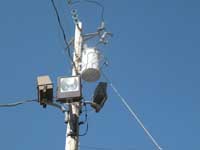 We’re not ready to get the power to your house just yet; the voltage coming from the power transformer, at 25,000 or 13,200 volts, is still too high to go directly into your home. From there, power is distributed across miles (depending on how far your home is from the substation) of power lines to reach a distribution transformer, which steps the power down again to the voltage level required by your home, which is 120/240 Volts. In the last five years the cost of transformers has risen 50 percent, partly due to escalating material costs and also to federal regulations requiring higher efficiencies.
We’re not ready to get the power to your house just yet; the voltage coming from the power transformer, at 25,000 or 13,200 volts, is still too high to go directly into your home. From there, power is distributed across miles (depending on how far your home is from the substation) of power lines to reach a distribution transformer, which steps the power down again to the voltage level required by your home, which is 120/240 Volts. In the last five years the cost of transformers has risen 50 percent, partly due to escalating material costs and also to federal regulations requiring higher efficiencies.
Service Drop and Meter
From the distribution transformer, a service wire is connected to your house, which is called the service drop. If your service is overhead, CAEC connects the service wire to your weatherhead, which is the point of connection between CAEC’s facilities and the homeowner’s. If your service wire is underground, CAEC connects the service wire to your underground meter box. The tie that is made on the source side of the meter is the point of connection between CAEC and the member. The meter box in both cases allows CAEC to measure the amount of energy used.
Power to Your Home
From the meter box, a wire usually connects to the home’s breaker box, which functions as a safety mechanism for your home. At this point your home wiring comes into play and enables energy to be sent to your plug outlets and light switches at the touch of a button or flip of a switch.
This only covers a few major pieces of equipment we use to keep your power on more than 99.9 percent of the time. Some other vital equipment we use includes highside and lowside breakers, voltage regulators and lightning arrestors. This process also does not cover the maintenance we must perform and personnel it takes to ensure the infrastructure we have put in place stays in top condition. This includes our vegetation management program, line and substation inspections and other critical programs.
Transmission System Back to Top
As we learned above with our detailed look at the distribution system, it takes many parts working together to make the transmission system possible. It is this grid, owned and maintained by CAEC’s Generation and Transmission provider, PowerSouth, as well as transmission lines owned by Southern Company that makes delivery of electricity possible to our members. And it all starts at the generation plant:
Generation
The generation of electricity begins at the power plant— where fuel sources such as coal, natural gas or hydro are used to transform water to steam by a heating process. For example, in most coal fired power plants, chunks of coal are crushed into fine powder and are fed into a combustion unit where it is burned. Heat from the burning coal is used to generate steam which is piped throughout the plant.
Turbines/Generator
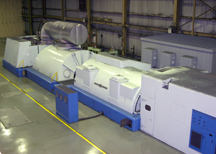 Since steam is water in a highly pressurized state, it is sent to a turbine where the pressure causes the blades on the turbine to spin at a high rate of speed. A shaft is connected between the turbine and a generator. Inside the generator is a magnetic field which produces voltage—or electricity at approximately 15,000 volts (V). For the power needs of CAEC’s members and the consumers of PowerSouth’s other distribution cooperatives, it takes about 10-12 years and between $700 million and $3 billion to build just one generation plant.
Since steam is water in a highly pressurized state, it is sent to a turbine where the pressure causes the blades on the turbine to spin at a high rate of speed. A shaft is connected between the turbine and a generator. Inside the generator is a magnetic field which produces voltage—or electricity at approximately 15,000 volts (V). For the power needs of CAEC’s members and the consumers of PowerSouth’s other distribution cooperatives, it takes about 10-12 years and between $700 million and $3 billion to build just one generation plant.
Transmission Substation
The high voltage power produced by the generator enters a transmission substation at the power plant. Inside the substation large transformers convert the generator’s voltage up to extremely high voltages (115,000-500,000 V range) in order for it to travel more efficiently over the transmission lines to transmission substations and transmission step-down substations.
Transmission Lines and Poles
 Once stepped up to the appropriate voltage, the power is then placed on the transmission system which consists of lines and poles owned, wholly or jointly, by PowerSouth. PowerSouth maintains more than 2,200 miles of transmission line and more than 300 substations across Alabama and the Florida panhandle. The planning for and siting of new transmission equipment can be a long and tedious process. It often involves a number of complex and critical environmental, reliability, economic, social and technical issues that must be examined before decisions can be made and the required permits (i.e. environmental impacts, rights of way) are issued. The investigation and research of each of these key areas, and the action of planning and forecasting the need and placement of transmission equipment can be a 10-20 year process and take an additional two to five years to actually implement.
Once stepped up to the appropriate voltage, the power is then placed on the transmission system which consists of lines and poles owned, wholly or jointly, by PowerSouth. PowerSouth maintains more than 2,200 miles of transmission line and more than 300 substations across Alabama and the Florida panhandle. The planning for and siting of new transmission equipment can be a long and tedious process. It often involves a number of complex and critical environmental, reliability, economic, social and technical issues that must be examined before decisions can be made and the required permits (i.e. environmental impacts, rights of way) are issued. The investigation and research of each of these key areas, and the action of planning and forecasting the need and placement of transmission equipment can be a 10-20 year process and take an additional two to five years to actually implement.
Switching Station
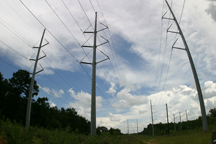 Once the power reaches its delivery point, it goes through a step-down (or reduction of voltage) process at switching stations. Here the 115,000-500,000 V is stepped down to approximately 115,000-46,000 V before being sent to the first component of the distribution system—the substation – and eventually to your home.
Once the power reaches its delivery point, it goes through a step-down (or reduction of voltage) process at switching stations. Here the 115,000-500,000 V is stepped down to approximately 115,000-46,000 V before being sent to the first component of the distribution system—the substation – and eventually to your home.
Such a large system can take years or decades to plan and can cost millions of dollars. For example, one-mile of a 115,000 V line on the transmission grid can cost approximately $400,000—from planning and development to implementation. When you think of the time and effort it takes, as well as the investment, to build and maintain the thousands of miles of line to deliver power to our homes, the value of electricity becomes much more apparent.
Power Generation: Coal Back to Top
 Do you know how much coal your home uses every day? Each year, an average family of four uses 3,375 pounds of coal for their water heater; 560 pounds- stovetop/range; 256 pounds- television; and 37 pounds- vacuum cleaner. Almost half of the electricity used in the United States is coal-generated, and given the vast resource the U.S. has of this fuel type — there is enough known supply to last almost 300 years —even used at the same rate as today.
Do you know how much coal your home uses every day? Each year, an average family of four uses 3,375 pounds of coal for their water heater; 560 pounds- stovetop/range; 256 pounds- television; and 37 pounds- vacuum cleaner. Almost half of the electricity used in the United States is coal-generated, and given the vast resource the U.S. has of this fuel type — there is enough known supply to last almost 300 years —even used at the same rate as today.
Costs associated with using coal include the mining, transportation, power generation and emissions-control, yet coal-fueled electric power remains one of the lowest-cost sources of energy for consumers. So how does coal power your home? Let’s start in the mines.
Mining Coal
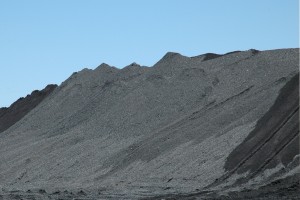 There are two basic ways to mine coal: surface mining and underground mining. Miners extract coal from deposits at or near ground level using the surface mining method. Surface crews remove earth covering the coal and gradually extract this fossil fuel. Miners are then required by law to return the land to its original, or an improved condition – known as reclamation. In areas where coal deposits are deep underground, miners dig tunnels into the earth and use one of three methods: conventional, continuous or longwall mining.
There are two basic ways to mine coal: surface mining and underground mining. Miners extract coal from deposits at or near ground level using the surface mining method. Surface crews remove earth covering the coal and gradually extract this fossil fuel. Miners are then required by law to return the land to its original, or an improved condition – known as reclamation. In areas where coal deposits are deep underground, miners dig tunnels into the earth and use one of three methods: conventional, continuous or longwall mining.
With the conventional method the miner uses a long electric chain saw to slice a strip under the coal deposit and the area is blasted. After the explosion loosens the coal, miners use a loading machine and conveyor belt to transfer the coal to the earth’s surface for further processing. In contrast, continuous and longwall mining do not use drilling or blasting. With these processes the coal is torn or cut out respectively, then sent on to the preparation plant. At the preparation plant, workers operate machinery to remove rocks and debris before washing, sorting and blending the coal before it is shipped.
Coal miners are highly skilled and well trained in the use of complex, state-of-the-art equipment. On average coal miners work a 40-hour week in cold, noisy, damp and dark environments, while earning an average hourly wage of $21.57. There are more than 300,000 people employed in the coal mining industry.
Transporting Coal
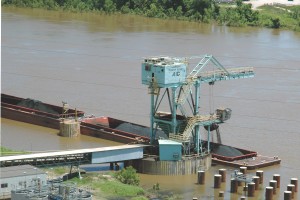 Coal is largely transported in the U.S. by rail and barge. Alternative shipping methods include truck, conveyors and vessel. Rail transportation accounts for 70 percent of coal shipments to power plants, which can lead to market power abuse (i.e. rate increases, poor quality and unreliable service) caused by the absence of competition. Since 2004, a number of generating and transmission cooperatives have reported that their railroad carriers are demanding 100 percent rate increases at the expiration of their existing contracts.
Coal is largely transported in the U.S. by rail and barge. Alternative shipping methods include truck, conveyors and vessel. Rail transportation accounts for 70 percent of coal shipments to power plants, which can lead to market power abuse (i.e. rate increases, poor quality and unreliable service) caused by the absence of competition. Since 2004, a number of generating and transmission cooperatives have reported that their railroad carriers are demanding 100 percent rate increases at the expiration of their existing contracts.
PowerSouth’s (our power supplier) Charles R. Lowman Power Plant, located near Leroy, Ala., receives golf ball-sized coal by barge on the Tombigbee River and by rail. As it is unloaded onto a conveyor, the coal is transferred to a large storage pile, big enough to sustain two months demand.
The Lowman plant can store up to 250,000 tons of coal. Based on high demand, the plant can burn as much as 5,000 tons on a day when consumers use a lot of electricity. The next step in the process is converting coal into electricity.
Converting Coal into Electricity
Coal-fired electricity generation is the process of making electric power from the energy (carbon) stored in coal. The process of converting coal into electricity has multiple steps:
1. A machine called a pulverizer (shown below) grinds coal into a fine powder.

2. The coal powder mixes with hot air, which helps it burn more efficiently. Primary air fans blow the mixture through coal pipes into the furnace.
3. The burning coal heats water in a boiler, creating steam.
4. Steam from the boiler spins the blades of a turbine, transforming heat energy from the burning coal into mechanical energy which spins the turbine.
5. The spinning turbine is used to power a generator, a machine that turns mechanical energy into electrical energy. This happens when magnets spin inside a copper coil in the generator.
6. A condenser cools the steam after it exits the turbine. As the steam is condensed, it turns back into water.
7. The water is pumped back into the boiler, and the cycle begins once again.
The generated electricity then begins its journey to your home through the transmission system, as explained above. While the basic process of converting coal to electricity has not changed in 60 years, advancements in the technology for removing emissions have led to cleaner coal.
“Clean Coal” Technology
Clean coal technologies fall into four main categories: coal washing, pollution controls for existing plants, efficient combustion technologies and experimental carbon capture and storage. Research and development in the last two decades have resulted in more than 20 new, lower-cost and environmentally compatible clean coal technologies. In fact, PowerSouth has invested approximately $400 million in equipment upgrades at the Lowman Plant for the reduction of sulfur dioxide, nitrogen oxide and mercury emissions. Lowman’s three coal-fired generating units can produce 556 megawatts (enough to power 300,000 homes and businesses) by burning approximately 1.5 million tons of coal annually. Through the integration of scrubber enhancements, sulfur dioxide emissions have been reduced approximately 92.5 percent (200,000 tons total) and nitrogen oxide emissions reduced by about 80 percent (18,000 tons), while achieving the co-benefit of mercury reduction when used in combination with scrubbers.
Although other countries do not monitor their emissions from coal, cleaner coal technology is helping alleviate the output of pollutants here in the U.S.
Power Generation: Natural Gas Back to Top
When you think about electricity, you may not think of natural gas—but this resource plays a vital role in producing your power. Natural gas is a fuel that requires very little processing to be usable for industrial procedures. It is high in heating value, or Btu content, and has few impurities as compared to some other fossil fuels. In the power industry, natural gas has historically been used for intermediate and peaking power plants, or plants that come online during “peak” usage times, such as cold winter mornings or hot summer afternoons when a large population is using a greater load of electricity. In recent years natural gas has been used more and more for base-load power generation.
From exploration and discovery to power generation, several steps occur before natural gas can be converted into electricity—from locating the resource to utilizing it to its fullest extent, you’ll understand natural gas’ role in supplying power to your home.
Exploration
Natural gas is found underground in deposits. It takes geologists and geophysicists and the use of technology to make educated guesses as to the location of these deposits. This process can take from two to 10 years. Geologists typically begin with geological surveys at the top of the earth’s surface—looking for characteristics indicative of natural gas deposits.
Once probable areas are located, geologists then use equipment such as seismographs (similar to those used to record earthquake fluctuations), magnetometers (to record magnetic properties) and gravimeters (to measure gravitational fields) to explore the composition of the earth below and determine if the environment is favorable for natural gas deposits. If these tests are positive, exploratory wells are then dug allowing geologists to see firsthand the underground characteristics and confirm if deposits are present.
Extraction
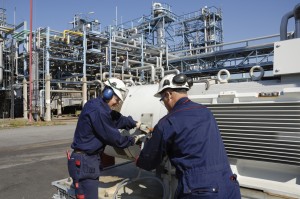 Once it is confirmed that an area has a high probability of gas deposits, drillers begin a three week, 24-hour a day process of digging down (in some cases, more than 20,000 feet below the earth’s surface) to these areas—where it is still not 100 percent certain if natural gas deposits exist.
Once it is confirmed that an area has a high probability of gas deposits, drillers begin a three week, 24-hour a day process of digging down (in some cases, more than 20,000 feet below the earth’s surface) to these areas—where it is still not 100 percent certain if natural gas deposits exist.
Drillers use two methods: percussion drilling which is the raising and dropping of a heavy metal bit into the ground, creating a hole; or rotary drilling which uses a sharp, rotating bit (much like a handheld drill) to dig. The rotary method is, for the most part, the most common form of drilling today. If natural gas is located, a well is constructed; if natural gas is not discovered, the site, or “dry hole,” is cleaned up and the process of trying to locate natural gas begins again. For example, from 1995-2005, 60 percent of wells drilled for natural gas were deemed dry holes.
If deposits are found, a conduit to the surface is opened and since natural gas is lighter than air, the pressurized gas will rise to the surface with little or no interference. In some instances, an electric charge is sent down the well breaking up the rock around it. After the charges are set off, a highly-pressurized liquid fracking solution, composed of 99.51 percent of water and sand, is sent down the well which further breaks up the rocks, releasing the natural gas. Since the gas is lighter than the solution, it rises to the top of the well for capture. Once lifted out of the well, the gas travels through a network of pipelines to be treated and processed.
Processing
Natural gas used in homes is vastly different from the raw form of natural gas that comes from the ground. The gas is sent to processing plants where excess water, fluids, sulfur, carbon dioxide and hydrocarbons are extracted, resulting in pure natural gas.
Arrival to the Power Plant
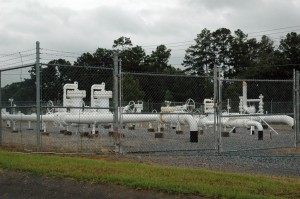 The processed gas arrives at the power plant in a mainline transmission pipe. This pipe connects to the power plant’s gas yard where filters further remove impurities and any excess moisture (such as water or liquid hydrocarbons) is collected and removed. Gas yards also condition the gas for equipment used in power production by adjusting the pressure to meet combustion turbine (see paragraph below) design requirements. Natural gas must stay in a “gaseous state,” and not be condensed into droplets of liquid. If natural gas condenses as hydrocarbons in a more concentrated form, it could cause internal equipment damage. One method utilized to maintain the required gaseous state is gas heaters, which help ensure the natural gas remains above the dew point.
The processed gas arrives at the power plant in a mainline transmission pipe. This pipe connects to the power plant’s gas yard where filters further remove impurities and any excess moisture (such as water or liquid hydrocarbons) is collected and removed. Gas yards also condition the gas for equipment used in power production by adjusting the pressure to meet combustion turbine (see paragraph below) design requirements. Natural gas must stay in a “gaseous state,” and not be condensed into droplets of liquid. If natural gas condenses as hydrocarbons in a more concentrated form, it could cause internal equipment damage. One method utilized to maintain the required gaseous state is gas heaters, which help ensure the natural gas remains above the dew point.
Combustion Turbines/Generator
Once at the proper pressure and temperature, the gas travels to the combustion turbine, which is very similar to a jet engine. Combined with compressed air generated in the forward part of the engine (also known as the combustion chamber), the burning of the natural gas causes the blades of the turbine to spin. The turbine is connected to a generator via a shaft. This shaft causes the generator to spin and transforms mechanical energy into electrical energy by using magnets and copper wire to create an electrical charge. This power is then transferred to the power plant’s step-up transformer and switch yard before entering the transmission system.
Combined cycle Natural Gas System
 After the turbine burns the natural gas, more power can be produced by utilizing a combined cycle system. This system takes the exhaust heat from the turbine (ranging from 900-1,150°F) and sends it to a Heat Recovery Steam Generator (HRSG).
After the turbine burns the natural gas, more power can be produced by utilizing a combined cycle system. This system takes the exhaust heat from the turbine (ranging from 900-1,150°F) and sends it to a Heat Recovery Steam Generator (HRSG).
The HRSG takes the exhausted hot gases and uses it to convert water into steam. This steam is then sent to a steam turbine that, like the combustion turbine, is connected to a generator to create electrical energy. The steam is sent to a condenser that cools the steam, turning it back into water where it is reused in the HRSG and the water/steam process is repeated.
Power Generation: Hydropower Back to Top
At an early age we were taught that electricity and water do not mix. True as that may be, did you know that water is used to generate your electricity? Sounds weird but one of the oldest sources used to produce energy, that has been around for hundreds of years, is hydropower – using water to power machinery or make electricity.
The United States is the fourth largest producer of hydroelectricity in the world after China, Canada and Brazil. Hydropower is the largest renewable energy source for electricity generation in the United States. In 2013, hydropower accounted for approximately six percent of total U.S. electricity generation and 52 percent of generation from all renewables. The total hydropower capacity in the U.S. is about 100,000 megawatts (MW), providing electricity to more than 28 million American homes. Additionally, in the U.S., hydropower is produced for an average of 7 cents per kilowatt-hour (kWh) in comparison to other renewable averages such as wind – 18 cents per kWh, solar – 13 cents per kWh and biomass – 10 cents per kWh.
Hydropower became widely used in the early 1880s when technology to transmit electricity over long distances was developed.
- Dam – Most hydropower plants rely on a dam that holds back water, creating a large reservoir.
- Intake – Gates on the dam open and gravity pulls the water through the penstock, a pipeline that leads to the turbine. Water builds up pressure as it flows through this pipe.
- Turbine – The water strikes and turns the large blades of a turbine, which is attached to a generator above it by way of a shaft. Modern hydro turbines can convert as much as 90 percent of the available energy into electricity.

- Generators – As the turbine blades turn, so do a series of electro-magnets on the rotating portion of the generator. The giant magnets rotate past copper coils, creating electricity. After the generators produce electricity, it is transferred to an electrical power substation and then transmitted to your home.
- Outflow – Used water is discharged from the turbine and is sometimes carried through pipelines (tailraces) and re-enters the river downstream.
The water in the reservoir is considered stored energy. The level of the reservoir above the turbine is referred to as “head” and determines the amount of pressure and volume available to generate electricity. A greater amount of head translates to more available energy for electrical generation. When the gates are open, the water flowing through the penstock becomes kinetic energy because it’s in motion. The rotating turbine in turn drives the generator.
Power Generation: Nuclear Back to Top
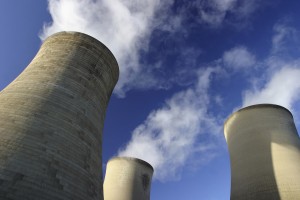
As America looks for clean energy solutions, there is one form of efficient, clean power production that our nation has not explored for the last 57 years—nuclear. Compared to other countries using nuclear power production more readily, the U.S. currently has only 62 commercially operated nuclear power plants with 100 nuclear reactors in 31 states in operation. Each nuclear power plant typically employs 400 to 700 people.
Although nuclear power is efficient, it takes many steps to get it into a usable form of energy for your home. Below we look at what it takes to use a fuel, such as uranium, and to convert it into power for your home.
Mining
The production of nuclear power begins in the mines—where miners search for uranium ore which serves as the fuel for nuclear power production. Uranium miners use several techniques to obtain this chemical element: surface (open pit), underground and in-situ leach mining. Underground Uranium mining requires the same basic steps as required for any other type of mining— such as coal.
Milling
 After uranium ore is removed from the groun d, it must be processed by “milling,” which involves a sequence of physical and chemical treatment steps. The final product of milling creates yellowcake (named for its powdery texture and yellowish color).
After uranium ore is removed from the groun d, it must be processed by “milling,” which involves a sequence of physical and chemical treatment steps. The final product of milling creates yellowcake (named for its powdery texture and yellowish color).
Conversion and Enrichment
The drums of yellowcake must go through yet another process to be transformed into a fuel that can be used by power plants. Natural uranium is composed of two types: U-235 and U-238. Only U-235 is capable of being used for energy production, but it only makes up less than 1 percent of natural uranium. So, for uranium to be used for fuel in a nuclear power plant, the range of U-235 must be raised or “enriched” into a gaseous state.
To understand how enrichment works, picture the gaseous molecules as sand particles suspended in air. All molecules are blown through thousands of filters or sieves, one after another. Because the lighter U-235 particles travel faster than the heavier U-238 particles, more of them penetrate each sieve. As more sieves are passed, the concentration of U-235 increases. The process continues until the concentration of U-235 is raised, or enriched, to 3-5 percent.
Fuel Fabrication
Before it can be made into nuclear fuel, however, the enriched uranium fluoride gas is changed to uranium dioxide—a solid. Then it is pressed into ceramic pellets the size of the tip of a person’s little finger. The fuel pellets are inserted and stacked end to end into slender, heat-resistant metallic tubes, or fuel rods which can range in size from 12-17 feet tall. The fuel rods are combined to form fuel bundles and on average, 157 fuel bundles (each weighing approximately 1,450 pounds) are loaded into each reactor core. As the U-235 is exhausted, fission, or the splitting process of atoms, slows, therefore requiring fuel bundles to be replaced every 18-24 months.
Power Generation
When the fuel bundles are placed in the reactor, it is the process of the uranium atoms splitting as they are bombarded with free neutrons—also known as fission—that creates energy which is given off as heat. However, control rods made of the chemical element boron are placed into the fuel bundles to slow down or altogether halt the fission of the uranium atoms, giving the power plant the ability to precisely control the amount of heat given off.
The heat that is produced through fission is sent to a Pressurized Water Reactor (PWR) where it heats water to 500°F but does not allow it to boil, much like a pressure cooker. Steam generators then take river water and run it against pipes that contain the PWR heated water to convert the river water into steam. The steam is then sent to turbines to begin the electricity power production process. The steam is then released through cooling towers.
Disposal
 In one year a typical nuclear power plant generates 20 metric tons of used nuclear fuel. The nuclear industry generates a total of about 2,000 metric tons of used fuel per year. During the past four decades, the entire industry has produced about 60,000 metric tons of used nuclear fuel. If used fuel assemblies were stacked end-to-end and side-by-side, this would cover a football field about seven yards deep. Most U.S. nuclear plants store waste either through on-site dry storage or a spent fuel pool. Since water is a natural radiation barrier, spent fuel is loaded into airtight steel or concrete-and-steel containers, known as casks, and then carefully delivered to a steel-lined, concrete pool of water for storage.
In one year a typical nuclear power plant generates 20 metric tons of used nuclear fuel. The nuclear industry generates a total of about 2,000 metric tons of used fuel per year. During the past four decades, the entire industry has produced about 60,000 metric tons of used nuclear fuel. If used fuel assemblies were stacked end-to-end and side-by-side, this would cover a football field about seven yards deep. Most U.S. nuclear plants store waste either through on-site dry storage or a spent fuel pool. Since water is a natural radiation barrier, spent fuel is loaded into airtight steel or concrete-and-steel containers, known as casks, and then carefully delivered to a steel-lined, concrete pool of water for storage.
On-site dry storage is done in a similar matter, with the used fuel being placed into engineered concrete and steel casks that are set on a special pad. Each cask can weigh 300,000 pounds and is strong enough to take a hit from a fast moving truck or even a train without any damage.
Other countries, such as Japan, Russia and those in Europe, reprocess used spent nuclear fuel by separating uranium and plutonium from the waste products of fuel rods and then re-enrich the recovered uranium to be used again as fuel.
Safety First
U.S. nuclear plants are well-designed, operated by trained personnel, defended against attack and prepared in the event of an emergency. In addition to backup systems that monitor and regulate what goes on inside the reactor, U.S. nuclear power plants also use a series of physical barriers to prevent the escape of radioactive material. Everything from the fuel pellets to the fuel rods are encased in materials that limit radiation exposure. All of these items are further contained in a massive reinforced concrete structure—called the containment—with walls that are four feet thick. The lack of a containment structure is what helped lead to the failure of the Chernobyl plant in Russia, something that cannot happen in the United States since all plants are required to have containment structures and other safety features.
It takes many steps to generate electricity produced from nuclear power. However, nuclear power allows us to have a clean, alternative energy source. When you take into account the planning process which includes meteorological, seismic and population studies, it can take up to 10-15 years to build a nuclear plant, from planning to operation. But in doing so, an efficient energy source can deliver power to your home.
Power Generation: Renewables Back to Top
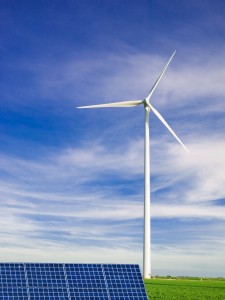
Because of modern technologies, new sources of energy are being used every day. Renewable energy is also called “clean” or “green” energy because it has little to no emissions and can be replenished in a short period of time. The four renewable sources used most often are wind, solar photovoltaics, geothermal and biomass. Hydropower is also a renewable resource and is highlighted above.
The development of renewables for commercial use in CAEC’s service area, including wind, solar, geothermal and biomass, is considered economically unfeasible when compared with more traditional options. Nonetheless, let’s look at the generation process of these natural fuel resources.
Wind
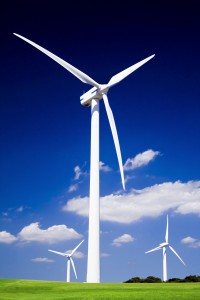 Wind machines (also called wind turbines) use blades to collect the wind’s kinetic energy. When the wind blows, it flows over the blades creating lift, like the effect on airplane wings, which causes them to turn. The blades are connected to a drive shaft that turns an electric generator.
Wind machines (also called wind turbines) use blades to collect the wind’s kinetic energy. When the wind blows, it flows over the blades creating lift, like the effect on airplane wings, which causes them to turn. The blades are connected to a drive shaft that turns an electric generator.
The cost of the commercial wind turbines varies from $1 to $2 million per mega watt (MW) of capacity installed. Projects can take over seven years to develop with 2.5 years in the planning phase. A single 1 MW turbine operating at a 45 percent production rate will generate about 3.9 million kilowatts (KW) of electricity in a year, meeting the needs of about 500 households annually. However, the average wind turbine turns at approximately 25 percent. In the U.S. there are approximately 85,000 people employed in the wind industry.
The major challenge of using wind as a source of power is that the wind is intermittent and does not always blow when electricity is needed. Wind energy cannot be stored and not all winds can be harnessed to meet the timing of electricity demands. The viability of a wind project in our location is further hampered by higher construction costs for offshore installations and the risk of wind farm destruction from hurricane-force winds sometimes encountered on our southern coasts.
Many potential wind farms where wind energy can be produced on a large scale need to be in locations far removed from the populated areas where the energy is needed. This puts wind energy at a major disadvantage in terms of costs of new substations and transmission lines.
Solar
 Solar energy is converted to electricity by utilizing Photovoltaic (PV) devices, or “solar cells.” The solar energy (heat) boils water; the steam drives a turbine; the turbine turns an ordinary generator, which then generates electric power. A 10 gigawatt (GW) solar power plant would cost about $100 billion to build and a 500 megawatt (MW) plant, which could supply power to 100,000 households, would require 4,000 acres whereas a 500 MW natural gas plant would require 40 acres and a coal plant 300 acres. In our area, solar would provide about 15 percent of the needed energy in a 24-hour period, requiring another fuel source during the remaining time.
Solar energy is converted to electricity by utilizing Photovoltaic (PV) devices, or “solar cells.” The solar energy (heat) boils water; the steam drives a turbine; the turbine turns an ordinary generator, which then generates electric power. A 10 gigawatt (GW) solar power plant would cost about $100 billion to build and a 500 megawatt (MW) plant, which could supply power to 100,000 households, would require 4,000 acres whereas a 500 MW natural gas plant would require 40 acres and a coal plant 300 acres. In our area, solar would provide about 15 percent of the needed energy in a 24-hour period, requiring another fuel source during the remaining time.
Geothermal
 Power plants produce geothermal energy by utilizing the earth’s dry steam or hot water accessed by digging wells. Either the dry steam or hot water is brought to the surface through pipes and processed into electricity in the power plant. Since geothermal plants use smaller land areas, the cost of land is usually less expensive than other power plants.
Power plants produce geothermal energy by utilizing the earth’s dry steam or hot water accessed by digging wells. Either the dry steam or hot water is brought to the surface through pipes and processed into electricity in the power plant. Since geothermal plants use smaller land areas, the cost of land is usually less expensive than other power plants.
Geothermal is a baseload resource, available 24 hours per day, every day of the year. It is independent of weather conditions and has no associated fuel costs. Drilling geothermal reservoirs and finding them, however, can be an expensive task. The initial cost for the field and power plant is around $2,500 per installed kW in the U.S., and even as high as $3,000 to $5,000 for a small, less than 1 MW power plant. The drilling of each observation hole can vary greatly depending on geological and other conditions. Geothermal is very site specific and along with the heat from the earth, toxic chemicals can also be dispersed in the process.
The United States generates an average of 15 billion kilowatt hours (kWh) of geothermal power per year and the plants are concentrated primarily in the western part of the country.
Biomass
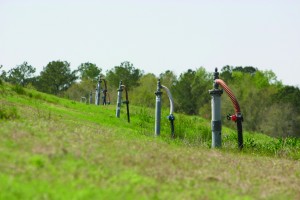 Biomass energy includes landfill methane gas, wood waste, farm by-products and ethanol. The majority of biomass electricity today is generated using a steam cycle. In this process, biomass is burned in a boiler to make steam. The steam then turns a turbine, which is connected to a generator that produces electricity.
Biomass energy includes landfill methane gas, wood waste, farm by-products and ethanol. The majority of biomass electricity today is generated using a steam cycle. In this process, biomass is burned in a boiler to make steam. The steam then turns a turbine, which is connected to a generator that produces electricity.
Of these resources, landfill methane gas has the highest potential for providing renewable electricity generation in the Southeast. To release the methane, gas is collected from decomposing waste by a series of wells strategically placed throughout the landfill. The wells are connected by a series of pipes leading to larger pipes that deliver the gas to a plant that generates electricity from renewable fuels. The entire piping system is under a vacuum created by blowers at the facility, causing landfill gas to flow from the wells. Once blowers deliver the gas to the plant, internal combustion engines use the gas as fuel and spin generators to produce electricity.
Converting landfill gas (LFG) to electricity reduces emissions of methane, a greenhouse gas 23 times more potent than carbon dioxide. As of this past July, approximately 636 LFG energy projects were operational in the U.S., (80 are with electric co-ops), generating almost 16 billion kilowatt-hours of electricity in 2013. In Alabama, there are five operational projects: Baldwin, Jackson, Montgomery, Morgan and St. Clair.
CAEC currently offers its members the opportunity to utilize this renewable alternative with the Green Power Choice program, a partnership between PowerSouth (our generation and transmission co-op) and Waste Management. With this project, electricity is generated from the methane gas produced at the Springhill Regional Landfill in Campbellton, Fla. Buying two blocks of green power per month for a year is equal to recycling 480 pounds of aluminum (15,322 cans) or recycling 1,766 pounds of newspaper. Blocks consist of 100 kilowatt hours (kWh) of electricity and can be included on the power bill for $2 per block.
A new energy future will be powered by multiple energy sources. And while renewables will play a key role in our energy future, they cannot meet the growing demand for electricity alone. A secure and reliable energy future must include a blend of advanced clean coal, nuclear, natural gas and renewable generation sources.
